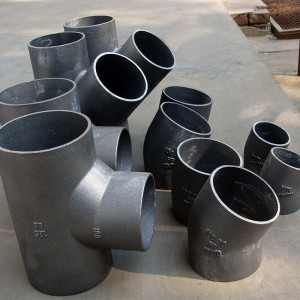Zář . 16, 2024 04:30 Back to list
Corroded Cast Iron Drain Pipe Solutions
Corroded Cast Iron Drain Pipe Understanding the Issues and Solutions
Cast iron drain pipes have long been a staple in plumbing systems, prized for their strength and durability. However, as with all materials, they are not immune to degradation over time. One common issue that arises with older plumbing systems is the corrosion of cast iron pipes. Understanding the causes, effects, and solutions for corroded cast iron drain pipes is essential for homeowners and maintenance professionals alike.
Causes of Corrosion
Corrosion in cast iron drain pipes typically occurs due to the combination of moisture, oxygen, and the acidic nature of wastewater. Over the years, these factors can lead to the breakdown of the metal, resulting in rust and the eventual formation of holes in the pipes. Additionally, the presence of various chemicals in household products can accelerate this process. For example, substances like bleach, drain cleaners, and even some food waste can create an acidic environment that exacerbates corrosion.
Another significant factor contributing to the corrosion of cast iron pipes is the temperature. In colder climates, pipes may be exposed to freezing and thawing cycles, which can accelerate wear and lead to fractures. Additionally, poor drainage and stagnant water can create an environment that promotes rust formation.
Effects of Corroded Pipes
corroded cast iron drain pipe

The impact of corroded cast iron drain pipes can be both immediate and far-reaching. One of the most noticeable effects is the reduced water flow capacity. As rust builds up within the pipe, it can constrict the flow, leading to slow drains and increased pressure within the plumbing system. This can result in frequent backups, requiring costly repairs and maintenance.
Moreover, the presence of corrosion can lead to leaks, which can cause further damage to surrounding structures, including walls and foundations. In cases where the corrosion is severe, the structural integrity of the pipes may be compromised, leading to collapses and significant plumbing failures. Additionally, corroded pipes can harbor bacteria and create unpleasant odors, making the home environment less healthy and comfortable.
Solutions to Corroded Pipes
Addressing the issue of corroded cast iron drain pipes requires a proactive approach. Regular inspection and maintenance are key to identifying the early signs of corrosion. Homeowners should consider scheduling routine plumbing evaluations, particularly in older homes where cast iron pipes are more common.
When corrosion is detected, several options are available. Minor issues may be resolved through methods such as epoxy lining, which involves applying a protective coating inside the pipes. This method can extend the life of the pipes without the need for complete replacement. For more advanced corrosion, however, replacing sections of the pipe or even the entire system may be necessary. Modern alternatives, such as PVC or ABS pipes, offer greater resistance to corrosion and can be a worthwhile investment for long-term durability.
In conclusion, addressing corroded cast iron drain pipes is essential for maintaining a healthy plumbing system. By understanding the causes, recognizing the effects, and implementing appropriate solutions, homeowners can mitigate risks and ensure the longevity of their plumbing infrastructure. Regular maintenance and timely interventions will not only protect the home but also provide peace of mind for the residents.
-
Durable Cast Steel Concrete Pipe Mold Bottom Rings & Base Trays
NewsAug.23,2025
-
Centrifugally Cast Iron Water Main Pipe for Reliable Mains
NewsAug.22,2025
-
Durable Centrifugally Cast Iron Water Main Pipe
NewsAug.11,2025
-
Centrifugally Cast Iron Water Main Pipes for Reliability
NewsAug.10,2025
-
High-Quality Centrifugally Cast Iron Water Main Pipes
NewsAug.09,2025
-
Durable Cast Iron Water Main Pipe & Drainage Solutions
NewsAug.08,2025


